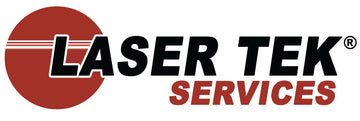HP accounts for 52% of the global printing Industry. In the US alone a billion ink and toner cartridges were manufactured in 2013 and HP took the giants share. Consequently, the top desktop printer manufacturer is also a frontrunner with regards to recycling programs.
Since the early 90’s its recycling program has freed our dumpsites and landfills of e-trash from empty cartridges. When we talk about environmental awareness, what HP did to resolve its burgeoning pile of used ink cartridges is a classic example.
This is good news to the environment because according to HP Shelley Zimmer, the company has recycled nearly 6 million cartridges since 1991. Imagine the impact of these cartridges when left to rot in dumpsites and landfills.
Cartridges can cause unparalleled damage to the environment since its plastic casing and components would only start to decompose after a thousand years. This does not factor in the harmful chemicals it carries that can seep through the ground and affect our domestic water supply. Many printer manufacturers have now been enticed to follow HP lead.
Making Cartridges Out of e-garbage
HP collects not just empty company ink cartridges but also plastic hangers and water bottles. HP’s recycling program involves the collection of polypropylene plastic containers, from water bottles to clothes hangers. All of this plastic-trash is routed to its recycling facility in Montreal, Canada for reprocessing. The reprocessing facility turns the polypropylene plastic into pellets, packs these into bags and ships the same to another HP facility in Dublin, Ireland. The plastic pellets are melted and molded into regular #364 black cartridge bodies. Once the manufacturing process is completed, the finished product is shipped to Germany, the HP facility that handles worldwide marketing.
The Conservation Equation
The contribution of HP recycling program to the environment is noteworthy. When HP recycles cartridges, minimal virgin materials are utilized in its production so that as much as 50% to 70% of are recycled materials. This is commendable, because only a minor portion is culled from the world non-renewable reserves. A virgin cartridge for instance would require 3.75 quarts of oil to manufacture while only 54% of that volume is required to produce recycled cartridges. Moreover, recycling reduces carbon emissions into the atmosphere by 77%. All the plus factors point to recycling as eco-friendly and sustainable, apart from helping clear garbage disposal sites of e-trash.
What is amiss?
What is missing in HP cartridge recycling effort is the aspect of ink reprocessing. All used cartridges still have considerable amount of ink left in it when these are discarded. In the case of HP cartridges, at least 20% of its ink supply is retained. An aggregate volume of disposed ink can pollute our waterways; though not harmful to humans since HP uses water based ink. Epson and Brother meanwhile use solvent based inks, which should be contained and disposed properly.
HP recycling initiative has already processed 6 million empty and used ink cartridges. This is a decent contribution to the global campaign for environmental awareness. OEM Brother, Epson and the rest are also doing their share for the upkeep of the environment.





